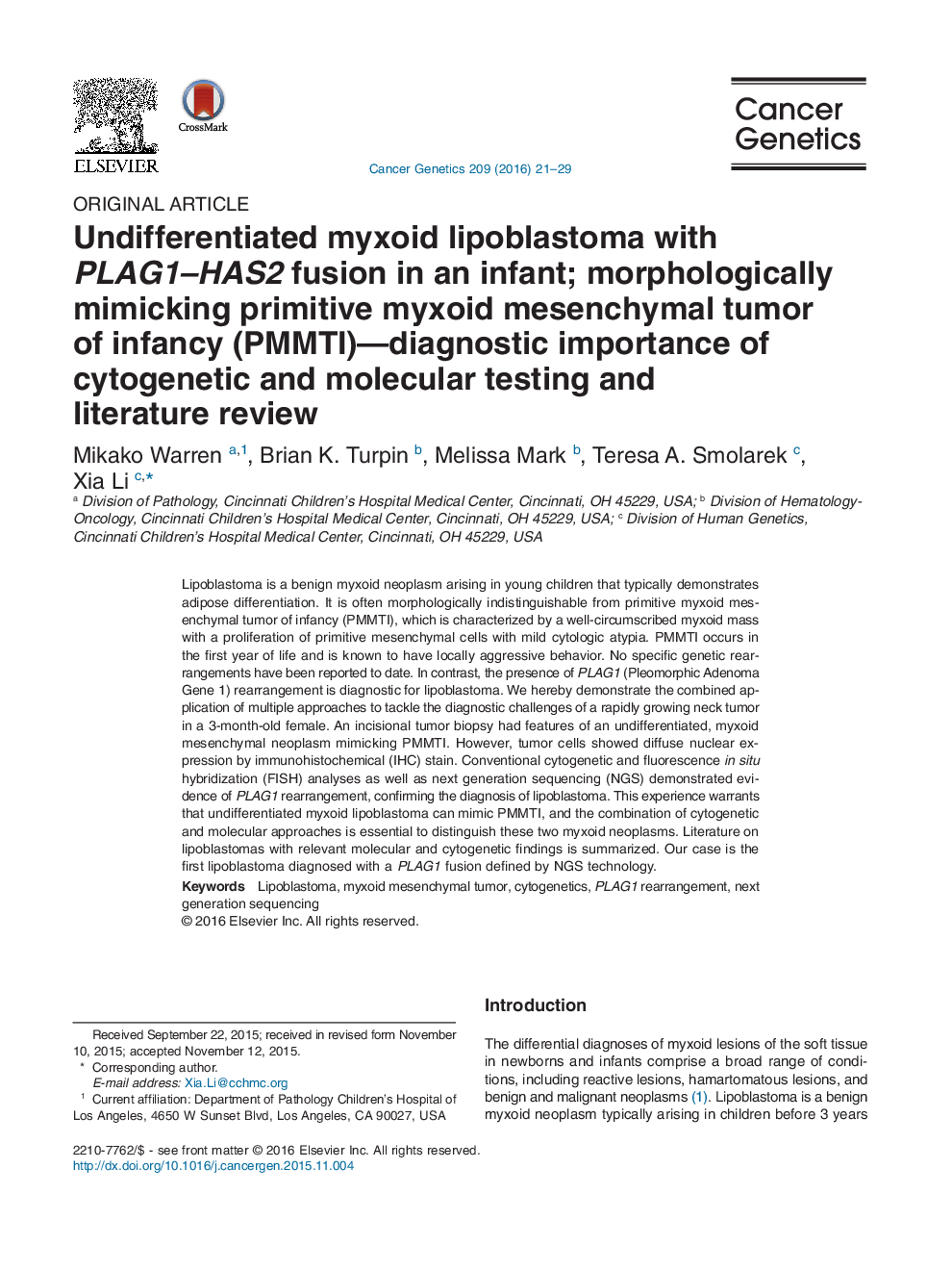| Article ID | Journal | Published Year | Pages | File Type |
|---|---|---|---|---|
| 2109768 | Cancer Genetics | 2016 | 9 Pages |
Abstract
Lipoblastoma is a benign myxoid neoplasm arising in young children that typically demonstrates adipose differentiation. It is often morphologically indistinguishable from primitive myxoid mesenchymal tumor of infancy (PMMTI), which is characterized by a well-circumscribed myxoid mass with a proliferation of primitive mesenchymal cells with mild cytologic atypia. PMMTI occurs in the first year of life and is known to have locally aggressive behavior. No specific genetic rearrangements have been reported to date. In contrast, the presence of PLAG1 (Pleomorphic Adenoma Gene 1) rearrangement is diagnostic for lipoblastoma. We hereby demonstrate the combined application of multiple approaches to tackle the diagnostic challenges of a rapidly growing neck tumor in a 3-month-old female. An incisional tumor biopsy had features of an undifferentiated, myxoid mesenchymal neoplasm mimicking PMMTI. However, tumor cells showed diffuse nuclear expression by immunohistochemical (IHC) stain. Conventional cytogenetic and fluorescence in situ hybridization (FISH) analyses as well as next generation sequencing (NGS) demonstrated evidence of PLAG1 rearrangement, confirming the diagnosis of lipoblastoma. This experience warrants that undifferentiated myxoid lipoblastoma can mimic PMMTI, and the combination of cytogenetic and molecular approaches is essential to distinguish these two myxoid neoplasms. Literature on lipoblastomas with relevant molecular and cytogenetic findings is summarized. Our case is the first lipoblastoma diagnosed with a PLAG1 fusion defined by NGS technology.
Related Topics
Life Sciences
Biochemistry, Genetics and Molecular Biology
Cancer Research
Authors
Mikako Warren, Brian K. Turpin, Melissa Mark, Teresa A. Smolarek, Xia Li,
